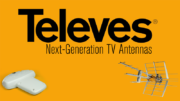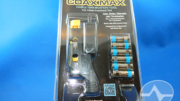Are you getting ready to install a satellite dish or TV antenna on your roof? If so, congratulations for deciding to break away form the cable TV monopoly. Now that that’s out of the way, you might be wondering what steps you should take to finish your installation. A lot of people might believe that choosing the perfect location, inspecting their dish or antenna kit, and gathering all their tools would be the simple one, two, three for this project. Those steps are important, but there are three other things you should do first.
So, what are these three important steps you must take? Well, you first should check to see if there are any homeowners association rules about mounting antennas or dishes atop your roof. If you live in certain parts of the country that are experiencing bad weather, you also need to check your local forecast. Lastly, if you think you might need help, don’t be afraid to ask someone for it. As to when you should go through these steps, the answer is: before you get up on the roof.
Here’s a closer look at these three pre-installation steps you should take before mounting a TV antenna or satellite dish on your roof:
1. Check with Your HOA/Condo Board/Landlord
If you live in a condominium community or rent a home, you’re not in total control of what improvement you can make to your house. Anything you plan to do to your home has to fit within a certain set of rules, often known as homeowners association (HOA) guidelines. These groups tend to get prickly when it comes to mounting antennas or satellite dishes atop your roof.
When dealing with HOAs, you need to know about the federal OTARD rule. That’s the nickname for edition 47 of the Code of Federal Regulations, section 1.4000. It was created by the Federal Communications Commission (FCC). According to this rule, you can put an antenna or dish on your roof as long as you follow these rules:
-
The antenna/dish must be smaller than 39.37″ (one meter) in any direction. (This covers all satellite dishes and most small to medium-sized antennas.)
-
You still need permission if you want to put it in an area that can be seen by the public.
-
You also need permission before you start drilling holes in your property.
Have you ever heard the old adage, “An ounce of prevention saves a pound of cure?” It’s more than just an old wives’ tale; it’s a proper precaution that can save you from dealing with a lot of problems down the road. The ounce of prevention you must apply here is touching base with HOA/condo association/landlord before you mount an antenna or dish. Chances are good that they’ll appreciate that you came to them first, and they might even offer some helpful tips and advice.
2. Check the Weather Forecast
Okay, this rule won’t apply to everyone. If you live out in Southern California where Stuart Sweet lives, your weather is likely going to be sunny and hot all day, every day. (Must be nice!) If you’re in Michigan or other areas of the Midwest like me, you’re probably experiencing a lot of rain. If you want to stay dry while you’re installing your TV antenna or dish, check your local weather forecast to choose the best day to get on the roof.
So, even though you probably already know this, we have to say it. (Our lawyers make us do these kinds of things.) TV antennas and satellite dishes are often powered by electricity. That’s one huge reason why you shouldn’t be tinkering with these objects on a rainy day. You also run the risk of being struck by lightning if you up on the roof with metal objects in your hands. Also from the common sense file is the fact that it can be easy to fall off a dry roof is great. It’s much greater when you’re on a wet roof.
3. Get Someone to Help You
Okay, this “rule” isn’t ironclad. Most people who install a satellite dish or TV antenna discover that it’s mostly a one-person job. That said, not everyone is an installation expert, especially on the amateur level. If you’re not the most mechanically-inclined, you might want an extra set of hands on the roof with you. Even if you’re confident in your mechanical skills, you definitely want another person there to hold the ladder steady while you climb it to get on the roof. Safety first, as always.
Sometimes the help you get can be over the phone. Although Stuart probably won’t appreciate this story, I have to tell you. I took Stuart’s word and bought an outdoor TV antenna for my home. When it came time to install it on my roof, I had a few questions. Naturally, I called Stuart and stayed on the phone with him until the installation was complete. It was only after I hung up that I remembered there’s a three-hour time difference between Michigan and California. I don’t think Stuart’s ever forgiven me for waking him up so early on a Saturday morning!
We at Solid Signal don’t mind offering installation advice to cord-cutters and satellite TV enthusiasts. Thing is, I’m not going to give you Stuart’s cell phone number. What I can do is offer you a link to the many TV antenna and satellite dish tutorials that Stuart has written. Chances are good that you’ll probably find all the answers you need here. If you have any other questions, feel free to post them on the Support from Solid Signal Facebook group. Stuart will answer your questions there.
TV Antenna or Satellite Dish?
I wrote this blog post assuming that the average person reading it already has a TV antenna or satellite dish. I didn’t even think of the possibility that you might be someone who’s considering getting one of these things… until now. TV antennas and satellite dishes offer excellent entertainment choices for nearly any family. The question is, which one do you want? The answer is actually a lot easier than some people might think.
When it comes to choosing between a TV antenna and a satellite dish, it all boils down to what you want. Antennas deliver some or all of the free TV channels and sub-channels in your local area. (This can be a lot depending upon where you live.) A satellite dish gives you a variety of national channels and pay TV options. Most people choose one or the other based upon their budget and other factors, while other people opt to have both.
Yes, you can have a TV antenna and a DIRECTV satellite dish in the same home theater setup. The reason some people choose to do this is simple: it’s the best way to get the most programming. (DIRECTV gives viewers an average of five to seven local channels, but a TV antenna can possibly receive them all.) Think about it. You’d get all the free channels and sub-channels from the antenna and all the national channels and pay TV options from your dish.
Want a TV Antenna and/or DIRECTV?
You can have it, and Solid Signal can help you make it happen. When it comes to cutting the cord, we are the premier online TV antenna experts. We carry nearly every type and brand of TV antenna, and our team of experts can recommend the best TV antenna for your home. As I said earlier, we also have a wide variety of TV antenna diagrams and tutorials right here on our blog; these will help you with installation and more. Oh, and by the way, TV antennas aren’t are only area of expertise.
Our Signal Connect division is an AT&T Preferred Dealer and experts in residential and commercial DIRECTV installations. Bottom line: if you want DIRECTV at home – with or without a TV antenna – our Signal Connect team are the people to call. These folks will match you with a DIRECTV package, satellite dish and equipment, and much more. If all you want is a TV antenna, just give Solid Signal a call at 888-233-7563. If you want DIRECTV, or a DIRECTV/antenna combination, simply fill out the form below and send it to Signal Connect. They’ll get back to you to answer your question and give you the help you need.





